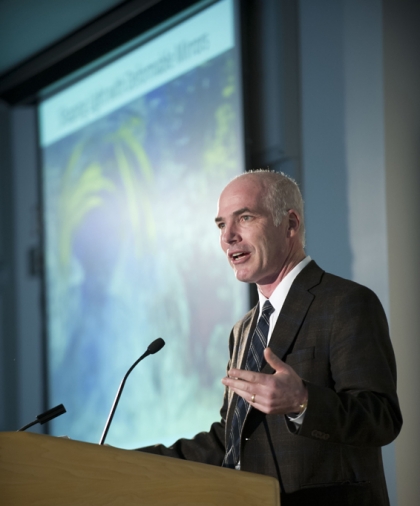Thomas Bifano
Fast Volumetric Imaging of Neurons
PROJECT DESCRIPTION
 We will conduct experiments using new imaging techniques and custom-built microscopes. Work will include two-photon imaging and extended depth of focus wide field fluorescent imaging, each enhanced by the addition of adaptive optics subsystems. In adaptive optics, BU-designed deformable mirrors are used to compensate for aberrations in the optical path or in the tissue itself. Work will include data collection, MATLAB programming, optical measurement, and post-processing of optical image data. Work could also include real-time control of deformable mirrors and optical instruments. Participants should gain some experience with MATLAB (even through simple introductory exercises) before joining this research group. We will train regarding all needed optics expertise.
We will conduct experiments using new imaging techniques and custom-built microscopes. Work will include two-photon imaging and extended depth of focus wide field fluorescent imaging, each enhanced by the addition of adaptive optics subsystems. In adaptive optics, BU-designed deformable mirrors are used to compensate for aberrations in the optical path or in the tissue itself. Work will include data collection, MATLAB programming, optical measurement, and post-processing of optical image data. Work could also include real-time control of deformable mirrors and optical instruments. Participants should gain some experience with MATLAB (even through simple introductory exercises) before joining this research group. We will train regarding all needed optics expertise.
LABORATORY MENTOR
Nic Vickers
RESEARCH GOALS
Develop better techniques to see neurons, despite strong scattering and aberrations in brain tissue. Explore uses of deformable mirrors to enhance and improve imaging in biological tissue. Understand and control a multi-photon microscope, including scanning subsystem, femtosecond laser, adaptive optics, and image collection software.
LEARNING GOALS
There are four complementary learning objectives. Participants should learn to:
• Identify important research problems that will advance our understanding of neural circuits and brain function using the principles and tools of photonics.
• Apply light-based methods of labeling, imaging, and activating or silencing neu-
rons and neural networks.
• Work on team-oriented projects that dually advance the disciplines of neurobiol-
ogy and photonics.
• Communicate effectively through written and oral presentations that describe in-
terdisciplinary neurophotonics work and its impact.
Learn more about Professor Bifano on his faculty page.